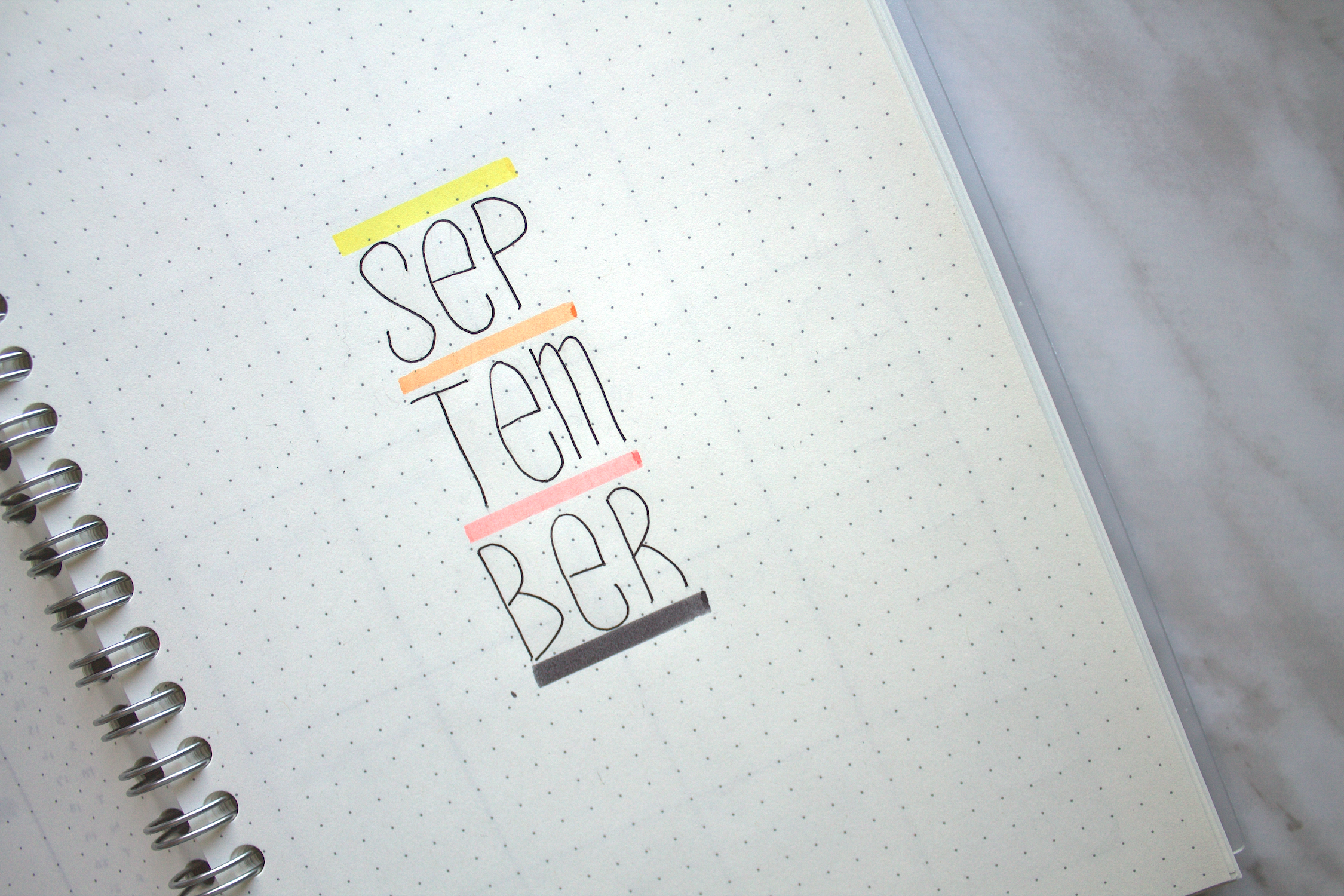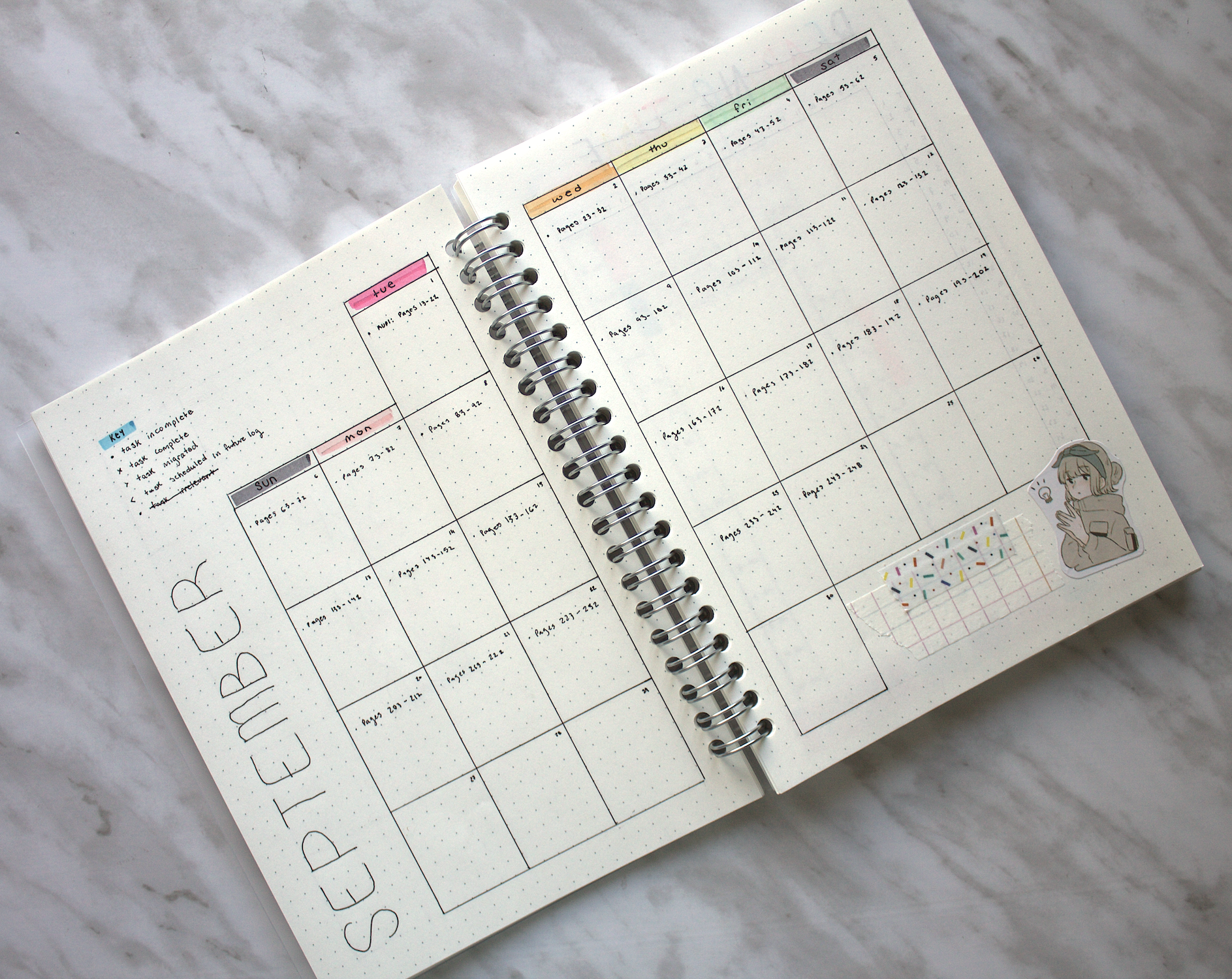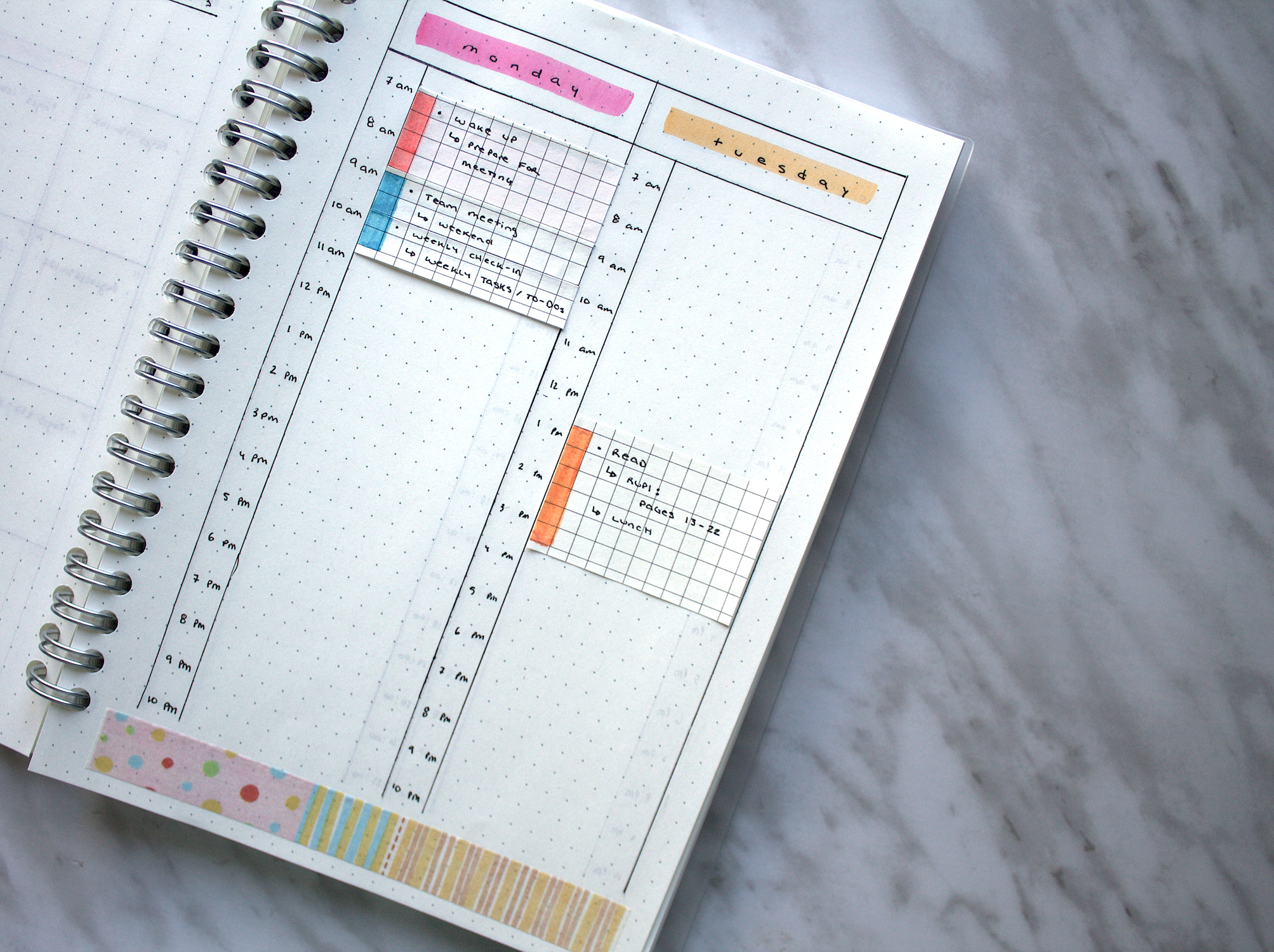
The September cover page.
Need a creative way to keep track of your online courses? Consider breaking out your bullet journal (or BuJo for short) to lessen the blue light strain on your eyes and to plan your goals effectively using the good ol’ pen and paper.
For those who don’t know what a bullet journal is, it is essentially a creative, productive journal catered specifically to your needs and intentions. The original creator of the Bullet Journal, Ryder Carroll, does have a specific logging system, but you can definitely bring in your own creative methods as well. Similar to what you'd find on a map, just remember to list any symbols you use in a key or legend for future references. Whichever method you choose to structure the journal, the intention of any bullet journal is to be “productive and meaningful.”
In the video below and in this blog post, I will show you the types of spreads that can help make your bullet journal a goal-setting tool for your classes, an organization system for your writing, or a tracker for your life goals.
1. Calendar Spread

Calendar Spread: The key/legend is at the top left hand corner. The month has been filled in with the page numbers of a poetry book.
It’s highly likely that most bullet journalists would start out with a calendar spread for the beginning of each month. Calendar spreads are used just like any other calendar would: to track plans and special events. However, the spread won’t be as useful to track plans if we’re mostly working or studying from home, so you can turn the calendar into a goal-setting tool where you can list your daily goals for the month. This way, you’ll lay out your future goals and track your progress within a longer timeframe.
In my own spread, I chose to list the page numbers of the poetry book I want to finish by the end of the month. I used Ryder Carroll’s tasks system to plan out this schedule, which consists of:
- a bullet ⚫️ for incomplete tasks,
- an X for completed tasks,
- a > for migrated tasks,
- a
- and
crossing outfor tasks that are deemed irrelevant
Again, you do not need to follow this system. You can make your own organizing system. Again, just make sure to list it in your key or legend for future references.
2. Habit Tracker Spread
Habit Tracker: To track how long I read every day of this month. Washi tape is used to keep track of the time.
Next is the habit tracker. This spread is typically used to track health habits such as water intake, workouts, food consumption, or other habits such as spending habits. The tracker is dependent on which habit you want to develop into your everyday routine. For example, you can track your writing time, your studying time, your productivity, or even your course progression.
In my own spread, I used the habit tracker to track my reading time just so that it is consistent with my calendar spread. I listed the days of the month on the left side of the chart, and the hours of the day at the top. To track my reading habit, I can simply use my highlighters to highlight the hours I read each day but I chose to use washi tapes instead.
Although my example only shows how to track one habit, you can definitely track multiple habits in one chart by listing them on one side of the chart and writing only the days of the month at the top rather than the time. This way, you can check the task off once a day after you finish it.
This spread is very useful to keep you progressing through your goals and develop a sort of routine so that you are constantly productive.
3. Weekly Spread

Weekly Spread: The first page shows my plans on Monday and Tuesday. No specific dates are written yet.
Lastly, the weekly spread. This spread is used to list the tasks you have to do throughout the week. It is more detailed than the last two spreads: you can list out your goals and tasks to do within a specific time chunk on a designated day of the week.
When listing your tasks and goals, you can also use short side notes to lay out how you will do them. These will help you keep in mind when you’re doing them.
This spread is similar to how you would use a planner or agenda but with your own personal touch to it.
Of course, there are many more bullet journal spreads that can be useful for creating goal-setting tools. But these are the spreads I recommend to track your goals, keep you productive, and hone in on your creative abilities.
Remember that bullet journals are catered specifically to your needs, so you don’t need to follow the same method and style that I have done in my spreads.
Be as creative as you want. Use any writing tool that you have.
Finally, have fun!